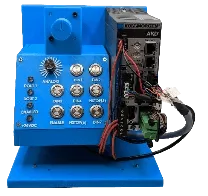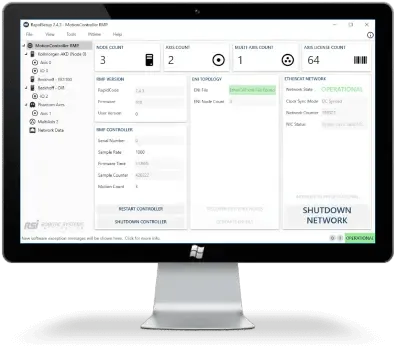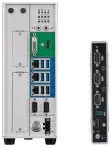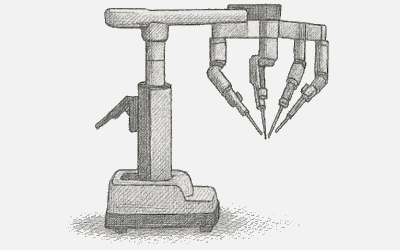Automated Optical Inspection (AOI)
Introduction to AOI for PCB Assembly
Automated Optical Inspection (AOI) machines are crucial in electronics manufacturing, used to inspect assembled printed circuit boards (PCBs)for defects. Using high-resolution cameras and sophisticated image processing, these systems verify component placement, presence, and soldering accuracy. There are two types of AOI systems. The 2D AOI employs cameras capturing top-down and sometimes angled views, evaluating component presence, polarity, and solder joints. Meanwhile, the 3D AOI incorporates height measurements through structured light or stereoscopic imaging to evaluate solder volume and component height, greatly improving defect detection reliability.
Modern AOI machines typically integrate both methods to minimize false positives while maximizing detection accuracy.
Motion System and Axes
Motion control is critical in AOI for accurate camera positioning and synchronized image capture. Typical motion axes include:
- X-Axis: Movement along the width of the PCB (typically the horizontal direction in the machine frame).
- Y-Axis: Movement along the length of the PCB (perpendicular to the X-axis), enabling full scanning coverage when combined with X motion.
- Z-Axis: Vertical adjustments for focus and height compensation.
- Theta/Tilt Axis (optional): Angled camera views to inspect solder joints effectively.
- Conveyor Axis: Automated PCB transport.
- Board Stop/Clamp: Secures PCB position during inspection.
High-performance AOI typically involves coordinated multi-axis motion to achieve detailed and precise inspections.
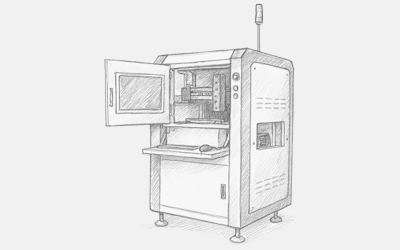
解决方案
AOI systems utilize either stop-and-go or continuous scanning approaches:
Stop-and-Go Scanning:
The camera moves and stops at predetermined points for image capture, requiring precise positioning and minimal vibration. RMP's Point-to-Point motion feature is essential here, providing accurate individual axis control to reach exact positions. This ensures highly precise stopping points, minimal overshoot, and stable camera positioning in a closed-loop system. The simplicity and repeatability of point-to-point commands make it ideal for the fixed inspection points in Step-and-Go scanning.
Continuous Scanning
This method involves continuous camera motion, capturing images dynamically. It demands precise synchronization between motion and camera triggering. RMP's multi-axis streaming coordination using PT, PVT, or PVTAJ motion types is critical to maintaining uninterrupted continuous motion. Some OEMs leverage RMP’s Path Motion feature, available in the Cartesian Robot class.
Why OEMs Choose RMP EtherCAT Over PLCs — and Its Standout Motion Programming Features
OEMs increasingly prefer the RMP EtherCAT motion controller over traditional PLCs due to its unmatched real-time control, motion coordination, and integration flexibility. While PLCs are often limited by rigid ladder logic and basic motion capabilities, RMP controllers offer advanced multi-axis trajectory planning—including PVT, PVTAJ, and Point-to-Point—designed for high-speed, high-precision environments like AOI systems.
The RMP platform's software-based, PC-driven architecture simplifies the integration of vision systems, user interfaces, and complex logic within a single industrial PC. This eliminates the need for additional controllers, reducing development time and system complexity. Its use of the EtherCAT network further enhances scalability and minimizes wiring, allowing OEMs to adapt quickly to changing inspection demands.
RMP’s advantages extend deeply into motion programming and system integration:
- Cross-Platform Support: AOI developers can choose between Windows or Linux environments based on application needs—without compromising real-time performance.
- RapidCode API: With support for C++, C#, VB.NET, and Python, the unified API enables developers to build advanced machine logic using object-oriented constructs like Axis, MultiAxis, and IO. The API supports subscribing to input events using callbacks or polling, allowing responsive interaction with sensors.
- High-Speed Motion Updates: With servo loop rates typically at 1 kHz or higher, the system delivers millisecond-level updates for motion and I/O. This ensures smooth path transitions, accurate triggering, and reduced vibration—critical for dynamic AOI applications.
- Motion Safety and Constraints: Built-in safety features include software-defined travel limits, following error protection, and integration with drive-level safety (e.g., Safe Torque Off). These safeguards help protect sensitive optics and electronics.
- Safety over EtherCAT (FSoE): RMP supports Functional Safety over EtherCAT (FSoE), enabling safety-critical data to be transmitted over the same EtherCAT network. This reduces wiring complexity and simplifies safety system design while meeting stringent SIL standards.
- Data Logging and Tuning: Tools like RapidScope allow for real-time data capture and PID tuning to refine performance. OEMs can record all the data by leveraging Recorders feature.
- Vision System Integration: Running on standard operating systems, RMP seamlessly interfaces with popular vision libraries and AI tools. Developers can coordinate motion and imaging via multithreaded execution, shared memory, or remote interfaces—ensuring synchronized image capture with precise motion control.
Together, these features make RMP EtherCAT a compelling, scalable alternative to PLCs formation-centric applications—especially where precision, integration, and responsiveness are mission-critical.

